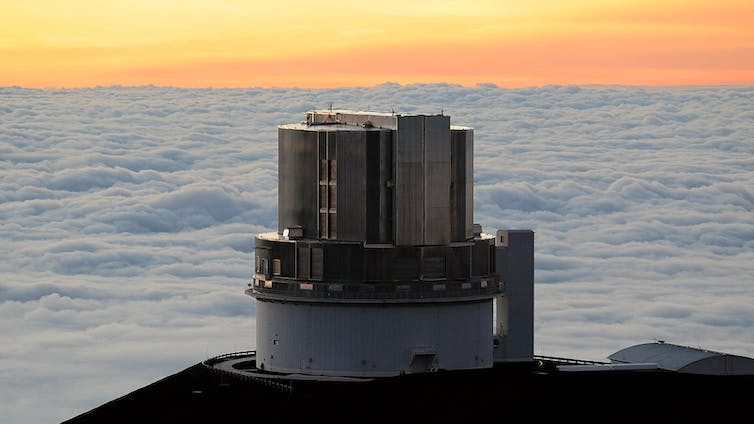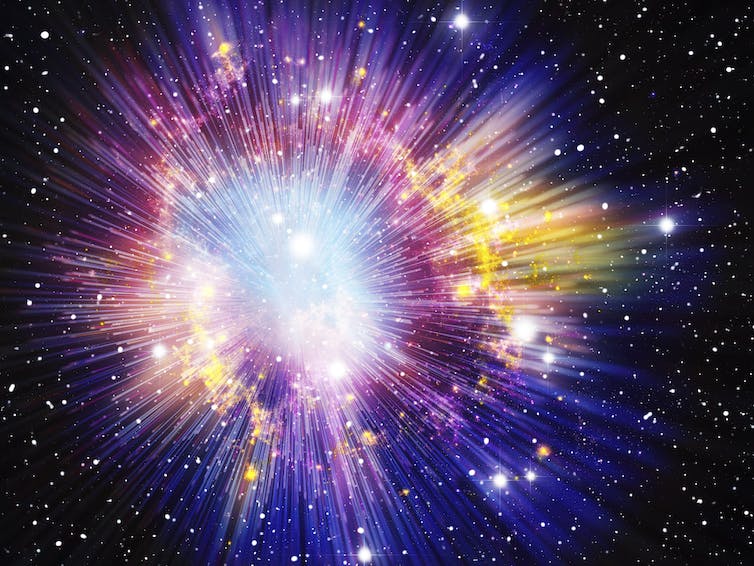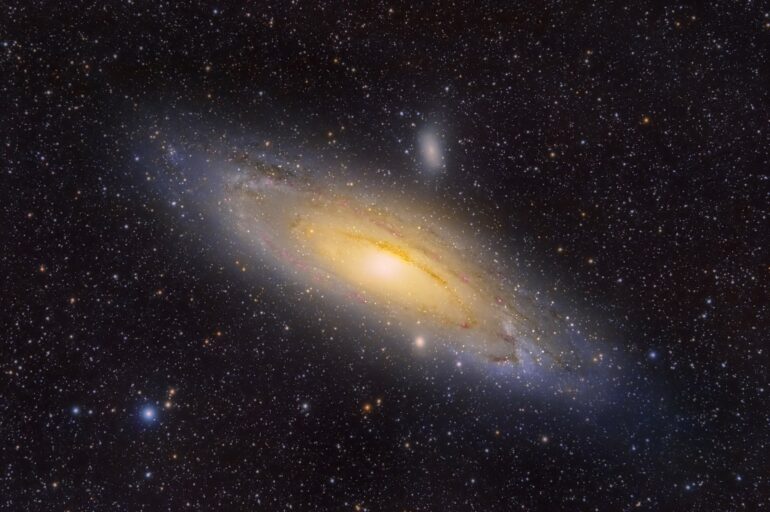When theoretical physicists like myself say that we’re studying why the universe exists, we sound like philosophers. But new data collected by researchers using Japan’s Subaru telescope has revealed insights into that very question.

Japan’s Subaru telescope, located on Mauna Kea in Hawaii.
Panoramio/Wikimedia Commons, CC BY-ND
The Big Bang kick-started the universe as we know it 13.8 billion years ago. Many theories in particle physics suggest that for all the matter created at the universe’s conception, an equal amount of antimatter should have been created alongside it. Antimatter, like matter, has mass and takes up space. However, antimatter particles exhibit the opposite properties of their corresponding matter particles.
When pieces of matter and antimatter collide, they annihilate each other in a powerful explosion, leaving behind only energy. The puzzling thing about theories that predict the creation of an equal balance of matter and antimatter is that if they were true, the two would have totally annihilated each other, leaving the universe empty. So there must have been more matter than antimatter at the birth of the universe, because the universe isn’t empty – it’s full of stuff that’s made of matter like galaxies, stars and planets. A little bit of antimatter exists around us, but it is very rare.
As a physicist working on Subaru data, I’m interested in this so-called matter-antimatter asymmetry problem. In our recent study, my collaborators and I found that the telescope’s new measurement of the amount and type of helium in faraway galaxies may offer a solution to this long-standing mystery.
After the Big Bang
In the first milliseconds after the Big Bang, the universe was hot, dense and full of elementary particles like protons, neutrons and electrons swimming around in a plasma. Also present in this pool of particles were neutrinos, which are very tiny, weakly interacting particles, and antineutrinos, their antimatter counterparts.

The Big Bang created fundamental particles that make up other particles like protons and neutrons. Neutrinos are another type of fundamental particle.
Alfred Pasieka/Science Photo Library via Getty Images
Physicists believe that just one second after the Big Bang, the nuclei of light elements like hydrogen and helium began to form. This process is known as Big Bang Nucleosynthesis. The nuclei formed were about 75% hydrogen nuclei and 24% helium nuclei, plus small amounts of heavier nuclei.
The physics community’s most widely accepted theory on the formation of these nuclei tells us that neutrinos and antineutrinos played a fundamental role in the creation of, in particular, helium nuclei.
Helium creation in the early universe happened in a two-step process. First, neutrons and protons converted from one to the other in a series of processes involving neutrinos and antineutrinos. As the…
